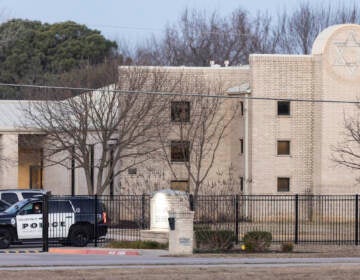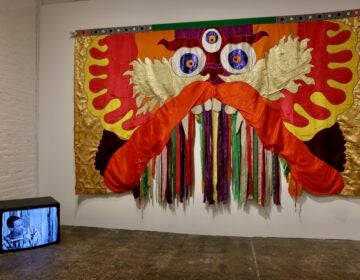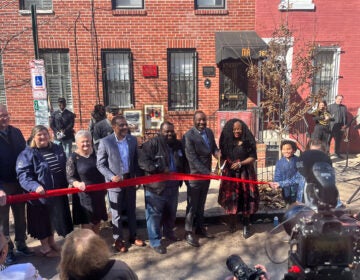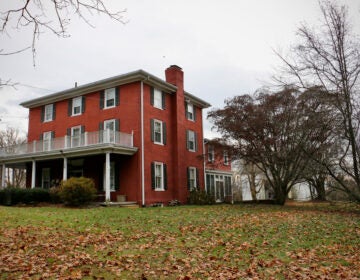Yo, it’s back. Philly’s Jewish museum reopens after 26 months closed
Philly’s Weitzman National Museum of American Jewish History comes back after the pandemic and bankruptcy as a forum for contemporary issues.
Listen 1:26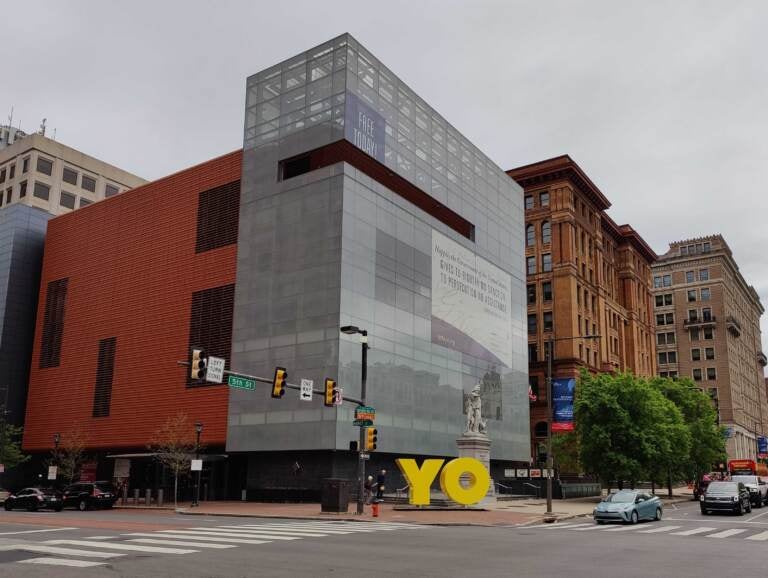
The OY/YO sculpture by Deborah Kass in front of the Weitzman National Museum of American Jewish History announces it reopening after 26 months closed. (Peter Crimmins/WHYY)
The bright yellow letters are a beacon, rising eight feet high on the sidewalk at 5th and Market streets, announcing the return of the Weitzman National Museum of American Jewish History.
The letters scream “YO” to passersby.
Seen from the other side, they scream “OY.” Sculptor Deborah Kass’ creation offers slang salutations in both Yiddish and Philly-ese.
The Weitzman is one of the last major cultural institutions in Philadelphia to reopen since the pandemic forced shutdowns in March 2020. In addition to COVID, the museum also had to cope with Chapter 11 bankruptcy reorganization proceedings, which began just two weeks before the shutdown, to get out from under an overwhelming $30 million building construction debt.
Adding insult to injury, because the museum was engaged in bankruptcy proceedings during the pandemic it was not eligible for assistance from the federal paycheck protection program (PPP), which had helped other businesses stay solvent.
The Weitzman was able to recover due to a huge boost from its board members, one of whom — Mitchell Morgan — bought its building to give the museum a large influx of cash. He then sold it to another donor — Stuart Weitzman — who donated it back to the museum.
“What we’ve been able to do is a pretty, if I say so myself, remarkable turnaround,” said president and CEO Misha Galperin. “We got back our building. We have a start on an eight-figure endowment. We have a new name. We are rebuilding our board. We’re rehiring staff. We’re doing strategic planning. We’re beginning to introduce exciting new elements to the museum.”
Some of those new elements reflect the very recent history of American Jewish life.
The museum has added to its permanent collection artifacts from the synagogue hostage situation in January when a stranger entered Congregation Beth Israel in Colleyville, Texas, and was offered tea.
That stranger turned out to be a gunman who held congregants hostage for almost 11 hours, until a rabbi threw a chair at him as a distraction to allow congregants to escape.
The teacup and the chair are now on display at the Wietzman
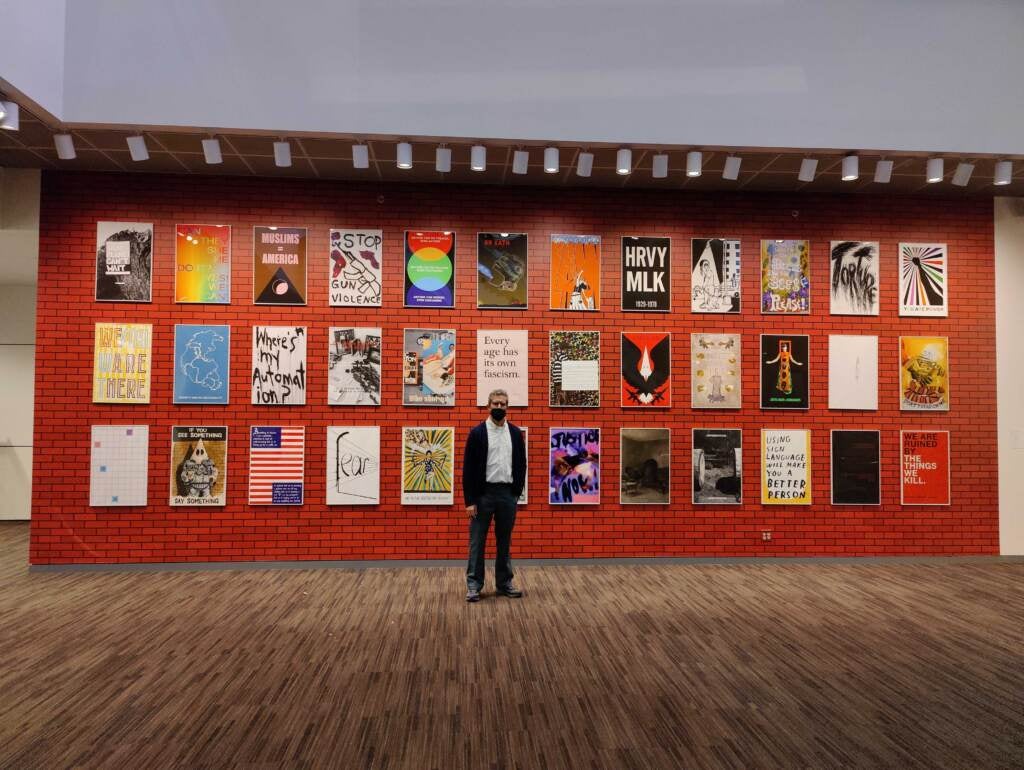
The museum also asked contemporary artist Jonathan Horowitz to install work that responds to the very recent past. Rather than being contained in the museum’s fifth-floor temporary exhibition space, “The Future Will Follow the Past” features work by Horowitz and other selected artists scattered throughout the building.
“It was our intention to interweave the art with the existing core exhibition,” said curator Josh Perelman. “Rather than remove the contemporary works from the historical material in the museum, we felt that the resonances would be more strongly felt if the historical objects and the contemporary works of art were physically in dialogue with one another.”
Among the works is a re-creation of the statue of Robert E. Lee in Charlottesville, Virginia, covered in a black tarp. In 2017 the planned removal of the Confederate sculpture sparked the Unite the Right rally of white supremacists, at one point chanting “Jews will not replace us!” The rally resulted in the killing of counter-protest Heather Heyer.
At the Weitzman, the carved foam sculpture represents the statue wrapped in black, something the Charlottesville city council decided to do after the fatal rally. Six months later a judge ordered the tarp taken off. After almost four years of court maneuverings, the Lee statue was ultimately removed in July 2021.
As it stands on the second floor of the museum, Horowitz’s ominous “Untitled” sculpture stands as a massive and mysterious black presence, representing an act of covering up racism and antisemitism rather than removing it. Horowitz referred to it as Darth Vader.
“It struck me that the form…was kind of like a Readymade answer with what to do with these racist monuments from the past,” said Horowitz in the audio tour. “I decided to remake the sculpture in that form, to freeze that moment in time.”
Horowtiz also installed a series of large decals on a wall of the second floor representing the raised fist emoji in different skin tones. The original raised fist emoji was first introduced in 2015 in a relatively neutral yellow color. It was later offered as a pop-up menu of different skin tones, ranging in shades from white to black.
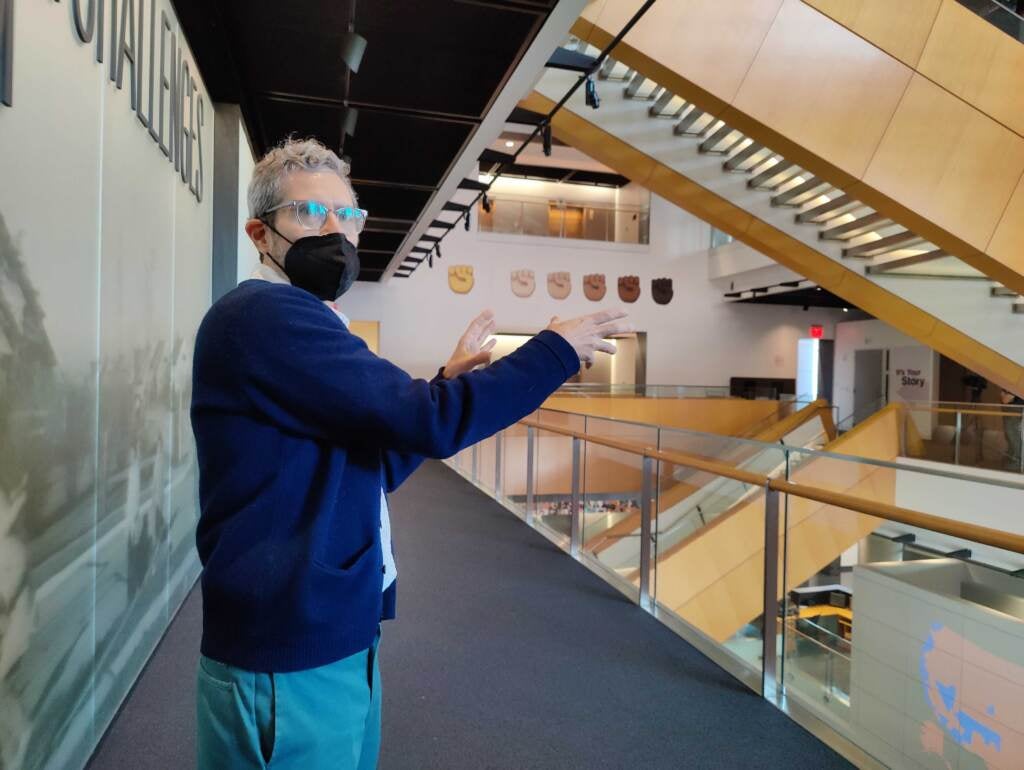
The raised fist, often used to express defiance, took on Black Power and Black Lives Matter meanings when it was offered in black tones. Horowitz believes the pop-up menu of skin tones unwittingly grants equal credence to white power.
“I think one of the hallmarks of the moment that we’re living in is exploring the ideas and ideals of America more deeply than we ever have before,” said Perelman. “As a museum that sits on Independence Mall, it is our mission not only to celebrate those ideals, but to unpack them and understand where they have been successful, and been beacons of opportunity, and where we have fallen short.”
Perelman said this approach to historical museum content, presenting it in a contemporary context, will set the standard for future programming at the Weitzman.
“History museums have had trouble,” said Galperin, pointing to the recently shuttered Philadelphia History Museum at Atwater Kent and the transfer of material to Drexel University. “We’ve been rethinking our history museum. We believe that history, including American Jewish history, is relevant to the present.”
As part of its post-bankruptcy reopening, the Jewish Museum will be free to the public. Galperin says the museum had experimented with free admission in the past, which resulted in attendance quadrupling.
Even with free admission, Galperin is confident the museum’s future with a larger endowment will be financially solvent. He also said the museum is ready for national exposure, expanding its board to take on members from San Francisco and Washington, D.C., and assuming a leading role in Jewish American Heritage Month, taking place right now, by coordinating programming among 125 partner organizations across the country.
“Not only are we a museum of history of American Jewry, located in Independence Mall, but what we have to say and what we have to share is important and relevant today,” he said. “This is some of the thinking about how to move forward.”
WHYY is your source for fact-based, in-depth journalism and information. As a nonprofit organization, we rely on financial support from readers like you. Please give today.



